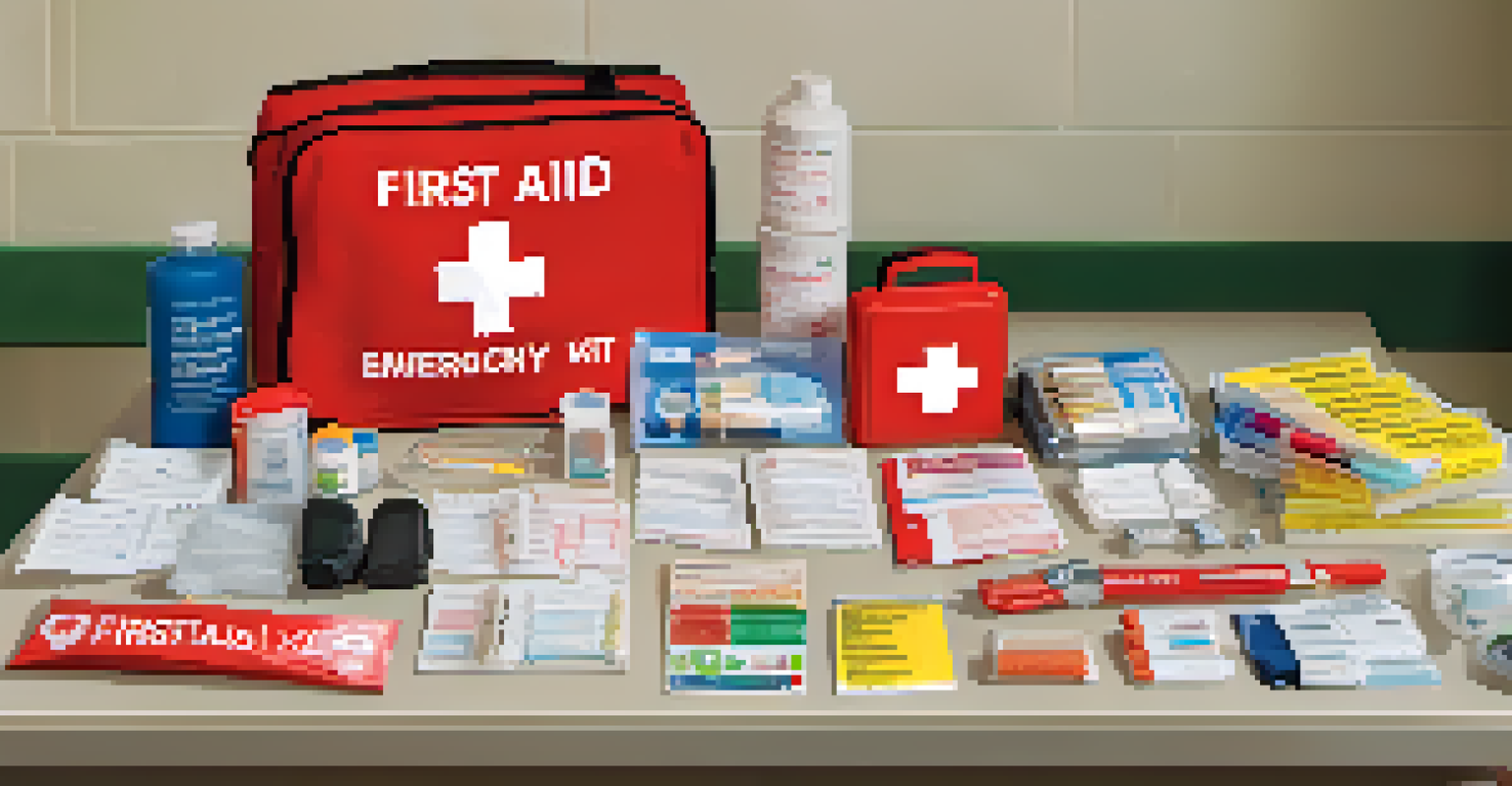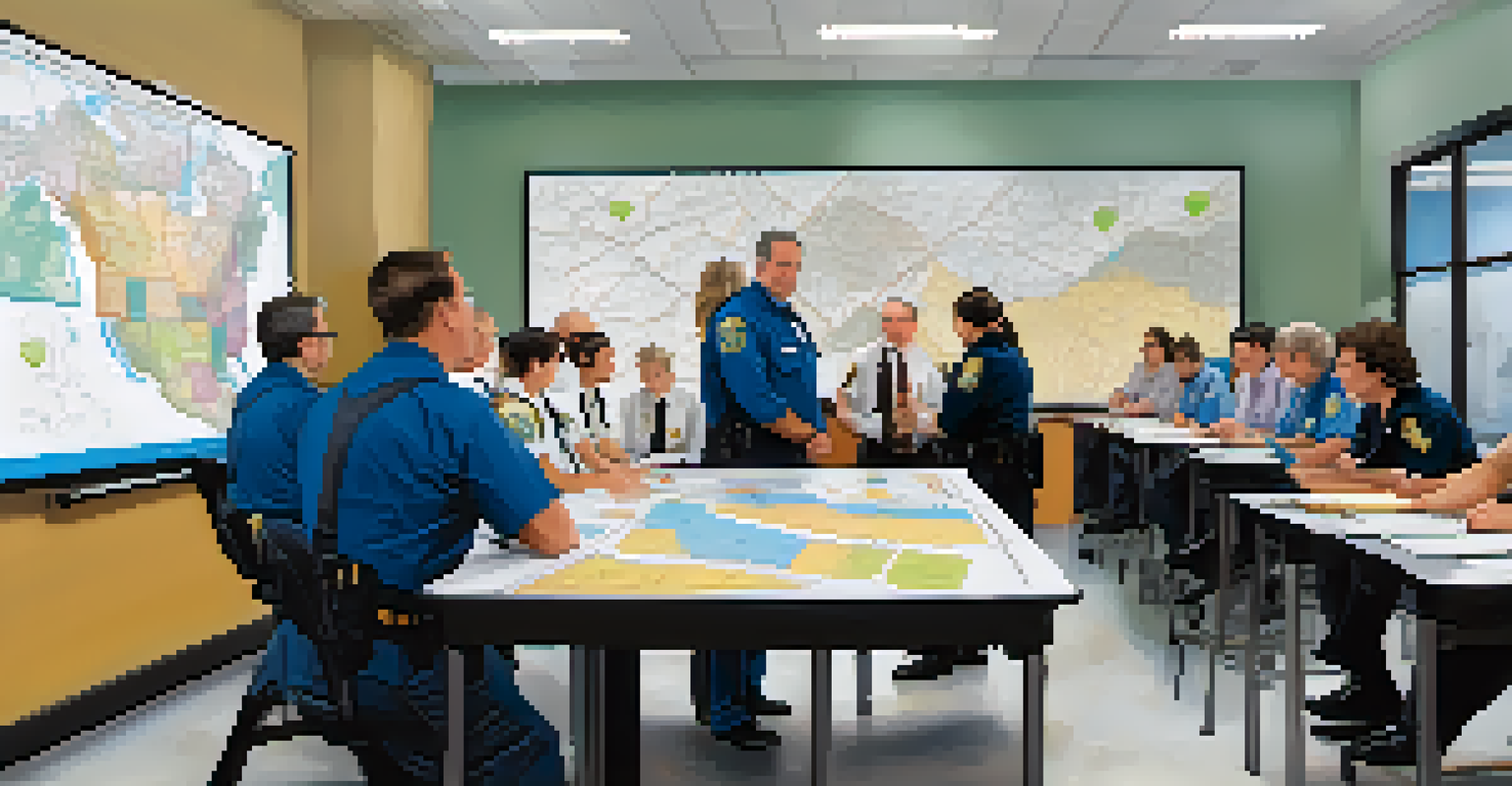Best Practices for School Emergency Response Plans

Understanding the Importance of Emergency Response Plans
Emergency response plans are critical for schools to ensure the safety of students and staff during crises. They provide a structured approach to handling various emergencies, from natural disasters to security threats. By having a plan in place, schools can react swiftly and effectively, minimizing chaos and confusion.
Preparation through education is less costly than learning through tragedy.
Moreover, these plans foster a sense of security within the school community. Parents, students, and staff feel more at ease knowing that there is a clear protocol to follow in times of trouble. This confidence can significantly mitigate anxiety and fear associated with potential emergencies.
Ultimately, a well-crafted emergency response plan can save lives. It equips everyone involved with the knowledge and tools they need to respond appropriately, showcasing the school's commitment to safety and preparedness.
Involving the Entire School Community in Planning
Creating an emergency response plan shouldn't be a solo effort; it requires input from the entire school community. This includes teachers, administrators, parents, and even students, as each group brings unique perspectives and insights. Involving diverse voices ensures that the plan addresses the specific needs and concerns of the school.

Additionally, collaboration fosters a sense of ownership among participants. When individuals contribute to the planning process, they are more likely to engage with and adhere to the procedures established in the plan. This collective investment can lead to a stronger, more unified approach to emergencies.
Importance of Emergency Plans
Emergency response plans ensure safety and preparedness for students and staff during crises.
Finally, involving the community creates an opportunity for education and awareness. Workshops or informational sessions can help everyone understand their roles during a crisis, which can make all the difference in an actual emergency.
Conducting Regular Drills and Training Sessions
Regular drills are a cornerstone of effective emergency response plans. They simulate real-life situations, allowing students and staff to practice their roles and responses in a controlled environment. This hands-on experience can help reduce panic and confusion when an actual emergency occurs.
The best way to predict the future is to create it.
Training sessions should cover a variety of scenarios, from fire drills to lockdown procedures. By preparing for different situations, the school community can build resilience and adaptability. These sessions not only reinforce the plan but also provide opportunities for feedback and improvement.
Moreover, drills can help identify potential gaps or weaknesses in the emergency response plan. When participants encounter challenges during a drill, it allows for timely adjustments, ensuring the plan remains effective and relevant.
Establishing Clear Communication Channels
Effective communication is vital during emergencies. Schools must establish clear channels for disseminating information quickly to students, staff, and parents. This could include text alerts, emails, or even a dedicated emergency app, ensuring that everyone receives timely updates.
Additionally, communication plans should outline how to report emergencies or suspicious activity. Empowering students and staff to speak up can enhance safety and encourage a proactive approach to potential threats. It's important that everyone knows whom to contact and how to do so efficiently.
Community Involvement is Key
Engaging the entire school community in planning fosters ownership and enhances the effectiveness of emergency procedures.
Finally, post-incident communication is just as crucial. After an emergency, schools should provide updates about the situation, response efforts, and any necessary follow-up actions. This transparency helps build trust within the school community and reassures everyone that their safety is a priority.
Regularly Reviewing and Updating the Emergency Plan
An emergency response plan is not a one-and-done document; it requires regular reviews and updates. As schools evolve and new challenges arise, the plan must adapt to reflect those changes. Annual evaluations can help ensure that the plan remains relevant and effective.
In addition to scheduled reviews, schools should also assess their plans after any significant incident. Learning from real-life experiences can provide invaluable insights into what worked well and what could be improved. This iterative process strengthens the overall response strategy.
Furthermore, involving stakeholders in the review process can foster continued collaboration. Gathering feedback from staff, students, and parents can highlight areas for improvement and ensure that everyone remains engaged in the safety efforts.
Creating a Resource Kit for Emergencies
A resource kit tailored for emergencies can be a lifesaver in critical situations. This kit should include essential items like first-aid supplies, flashlights, batteries, and communication tools. Having these resources readily available can streamline the response process and provide immediate assistance.
Additionally, including emergency contact information and important documents in the kit can prove invaluable. This ensures that critical details are easily accessible, even in high-stress situations. Schools should regularly check and replenish the kit to maintain its effectiveness.
Regular Drills Enhance Readiness
Conducting regular drills allows the school community to practice responses and identify areas for improvement.
Lastly, consider creating a digital version of the resource kit. This could be an app or a cloud-based document that can be accessed from anywhere. By combining physical and digital resources, schools can enhance their preparedness and ensure that help is just a click away.
Engaging with Local Emergency Services
Building strong relationships with local emergency services is essential for effective school emergency response plans. These professionals can provide guidance and resources, ensuring that the school's plan aligns with community protocols. Regular meetings and collaborative training sessions can strengthen these partnerships.
Moreover, involving emergency responders in drills can enhance the plan's effectiveness. Their expertise can help identify potential shortcomings in the school's response strategy and provide real-world insights that can be invaluable during an actual emergency.

Additionally, fostering these connections can facilitate quicker responses in times of crisis. Knowing that local emergency services are familiar with the school's layout and protocols can significantly improve response times and coordination during an incident.
Fostering a Culture of Safety and Preparedness
Creating a culture of safety within the school is vital for the effectiveness of emergency response plans. This involves promoting awareness and encouraging proactive behaviors among students and staff. Regular discussions about safety can help reinforce the importance of preparedness.
Moreover, celebrating safety achievements, like successful drills or improvements to the emergency plan, can motivate continued engagement. Recognizing individuals or groups who exemplify safety can foster a sense of community and responsibility.
Finally, integrating safety education into the curriculum can further embed this culture. Teaching students about emergency preparedness not only equips them with knowledge but also empowers them to take an active role in their safety and that of their peers.